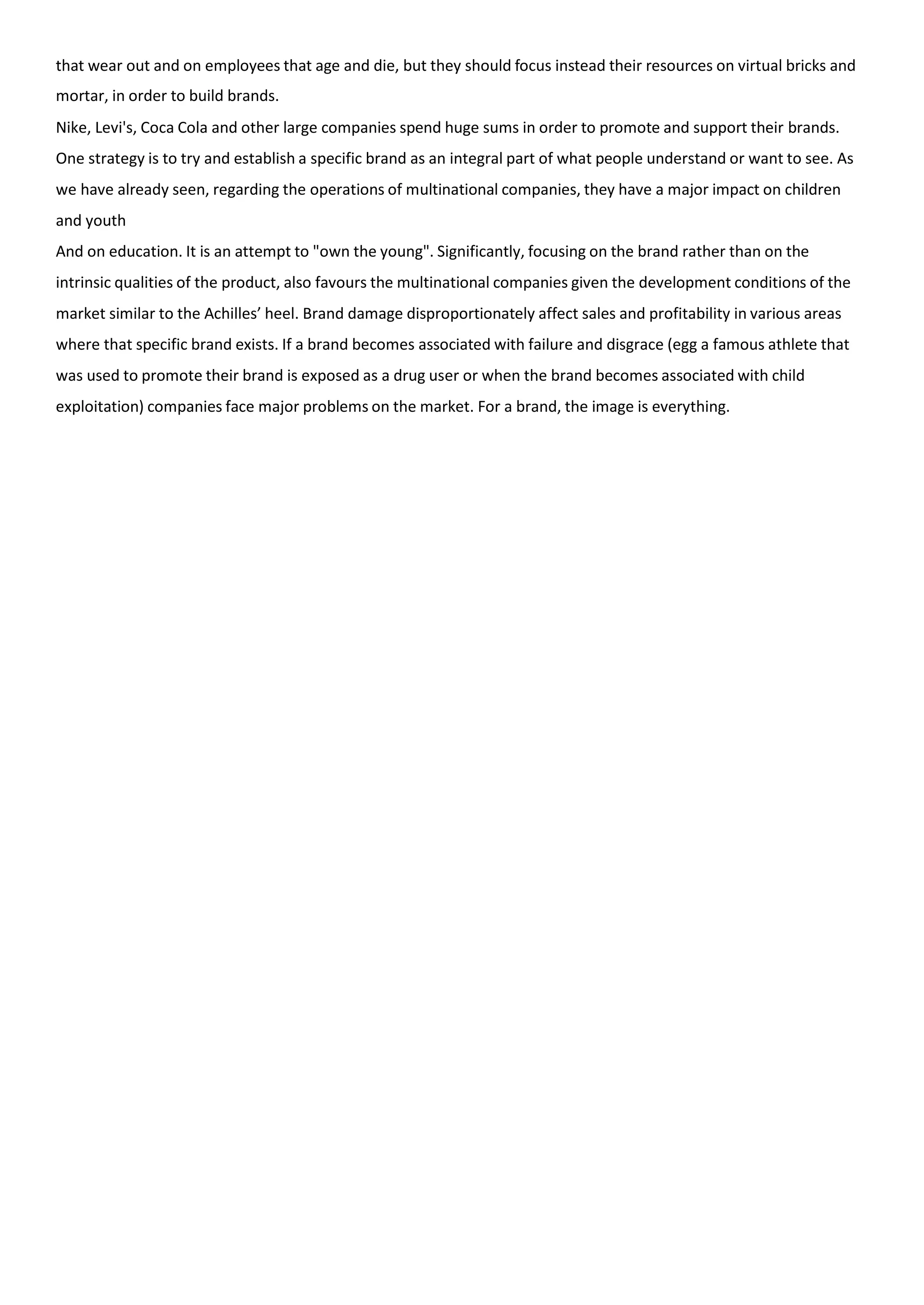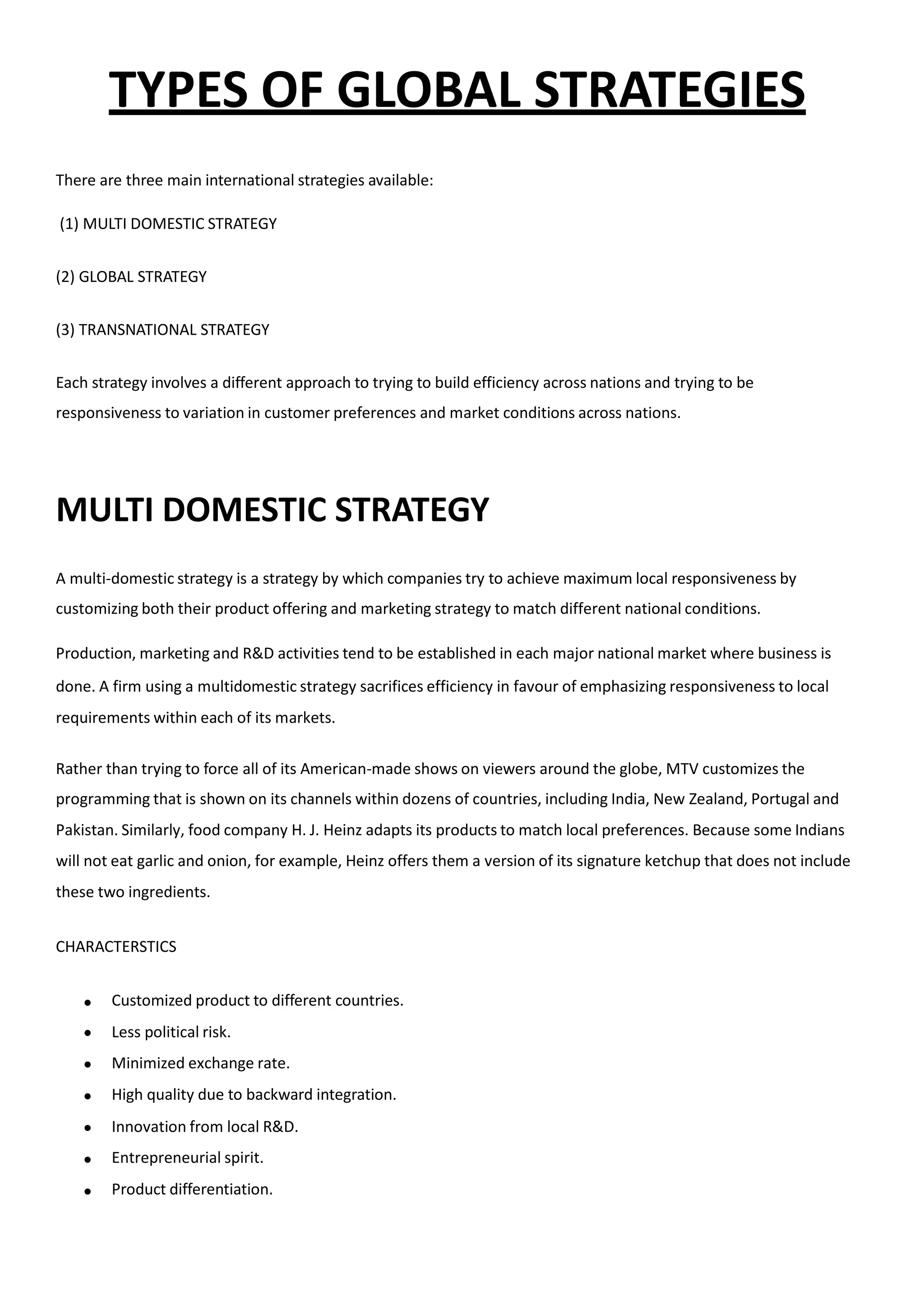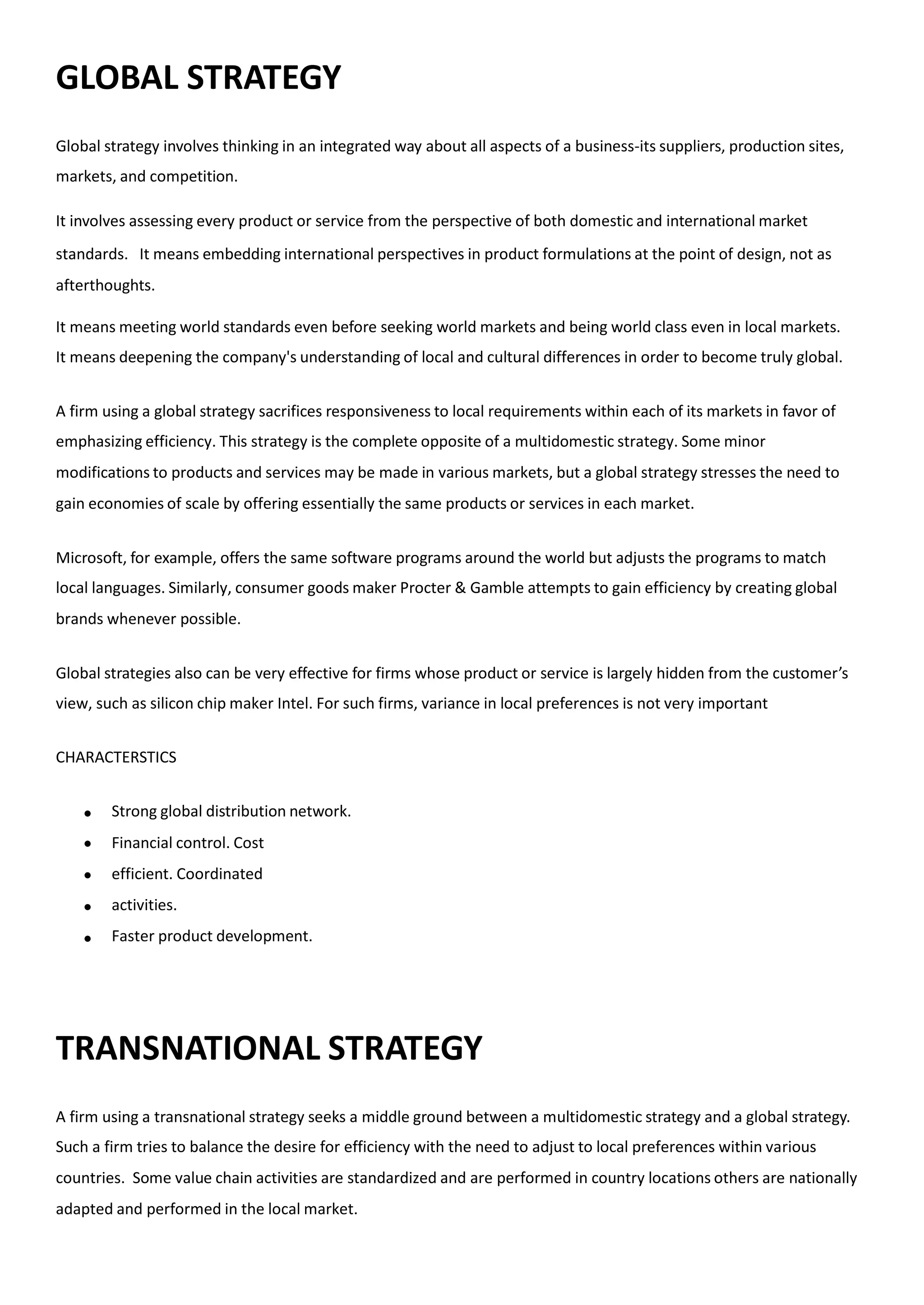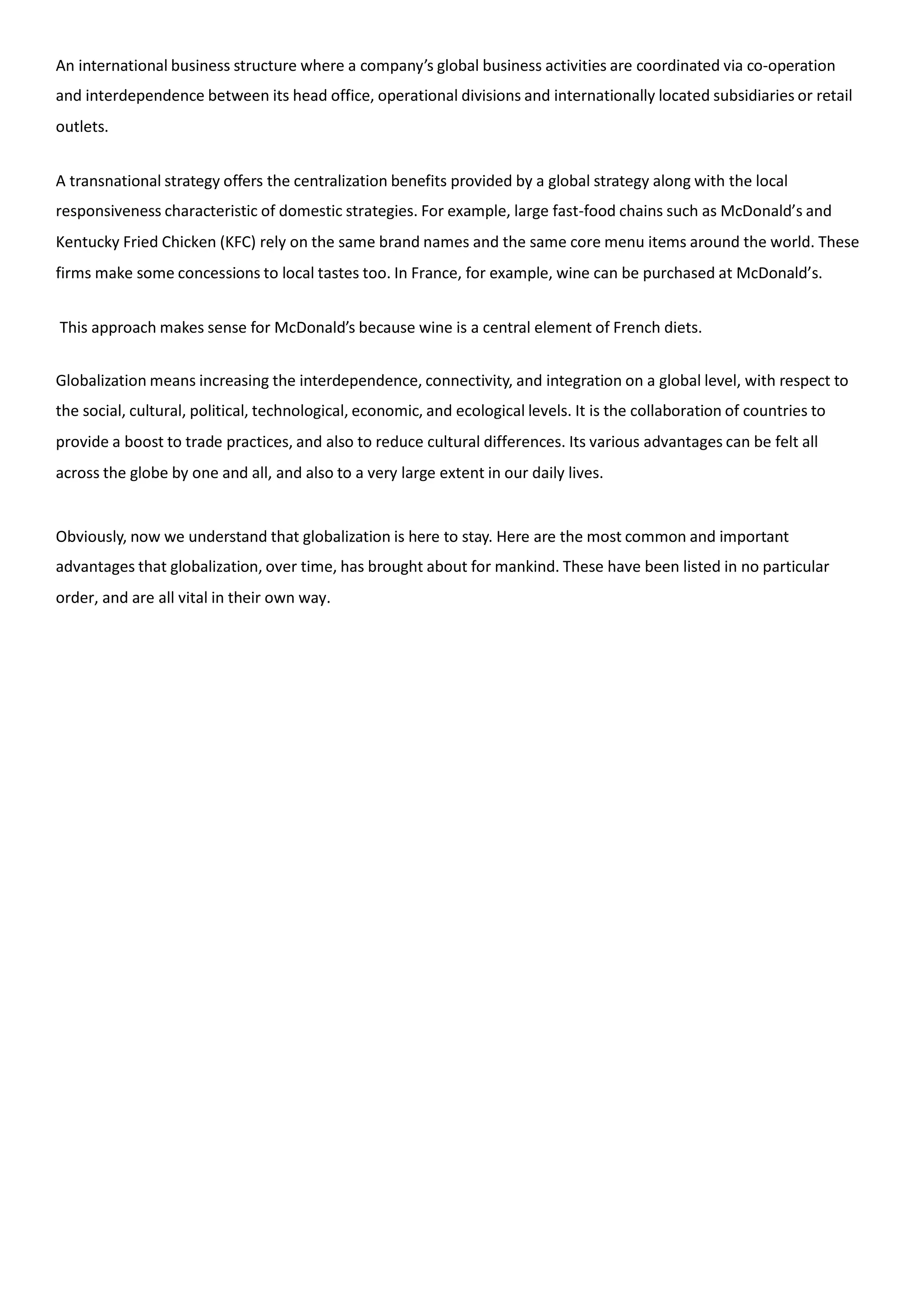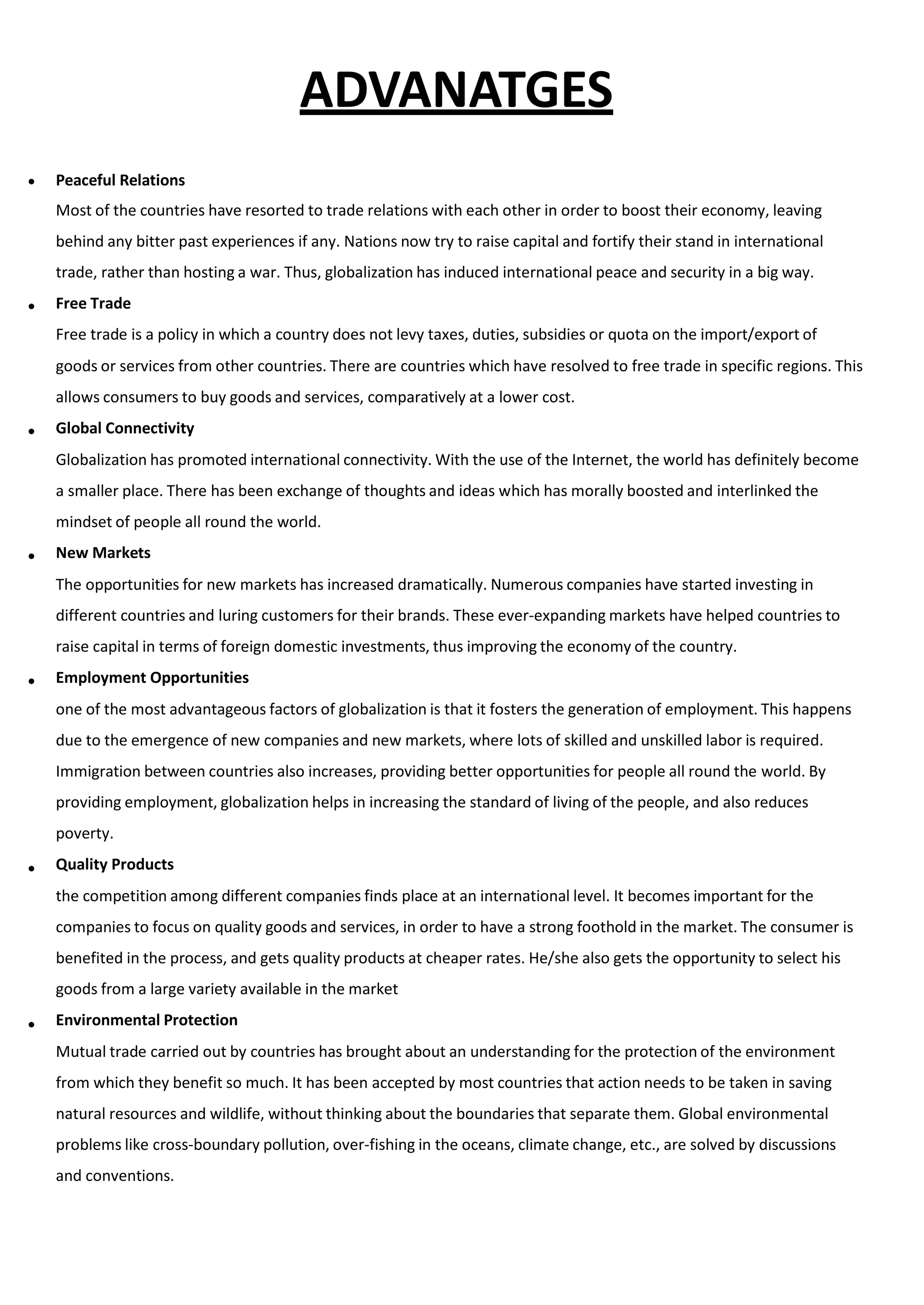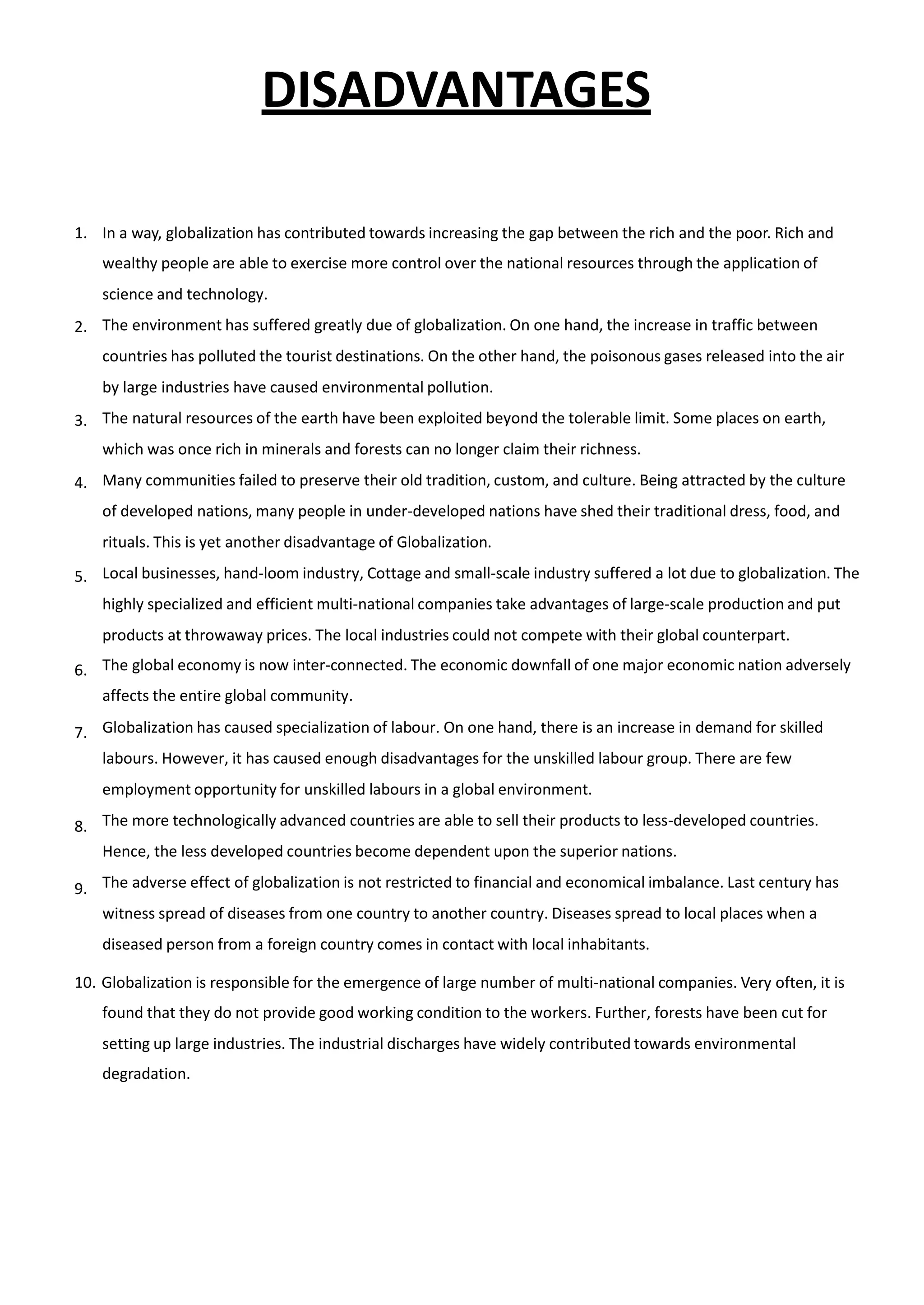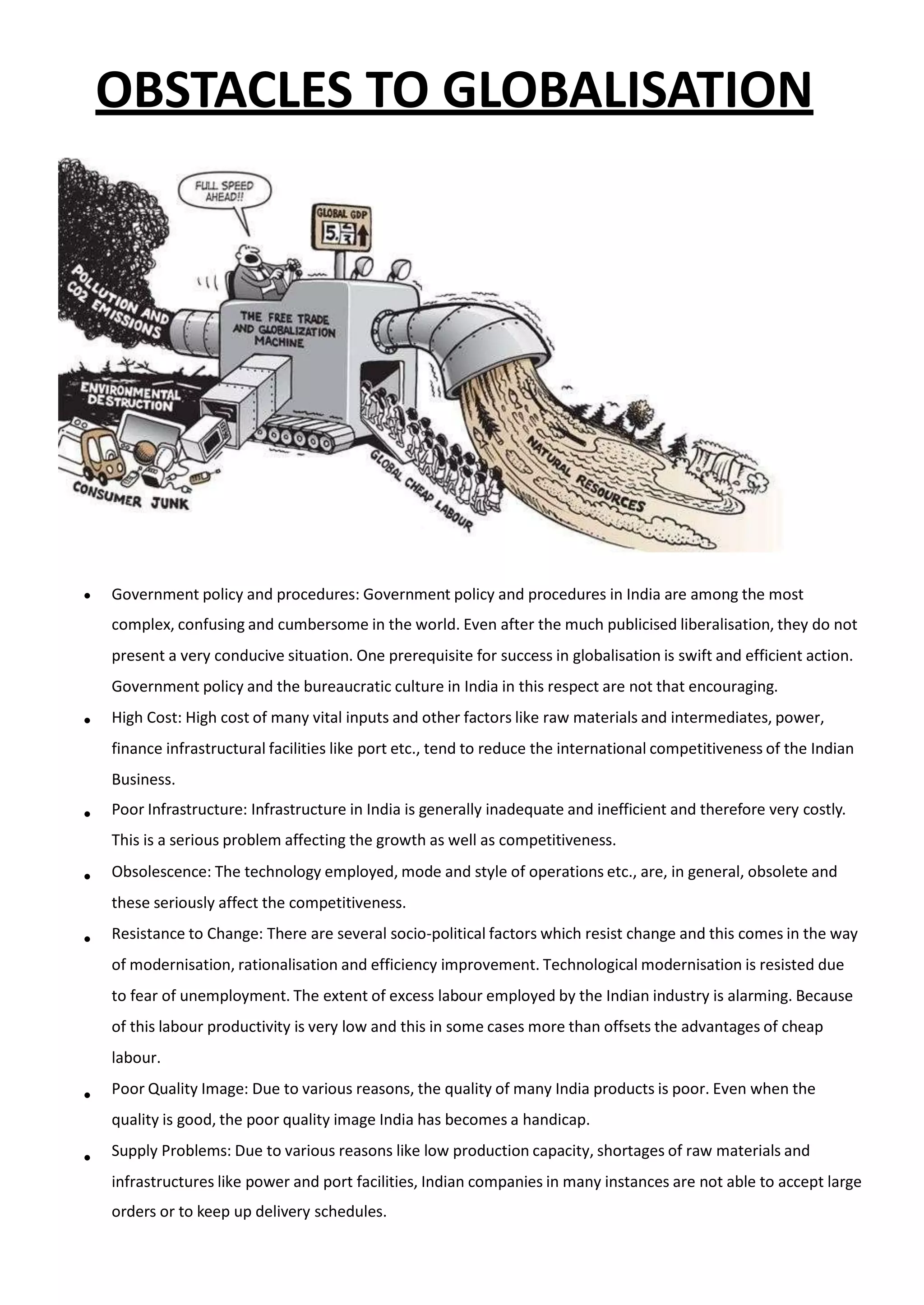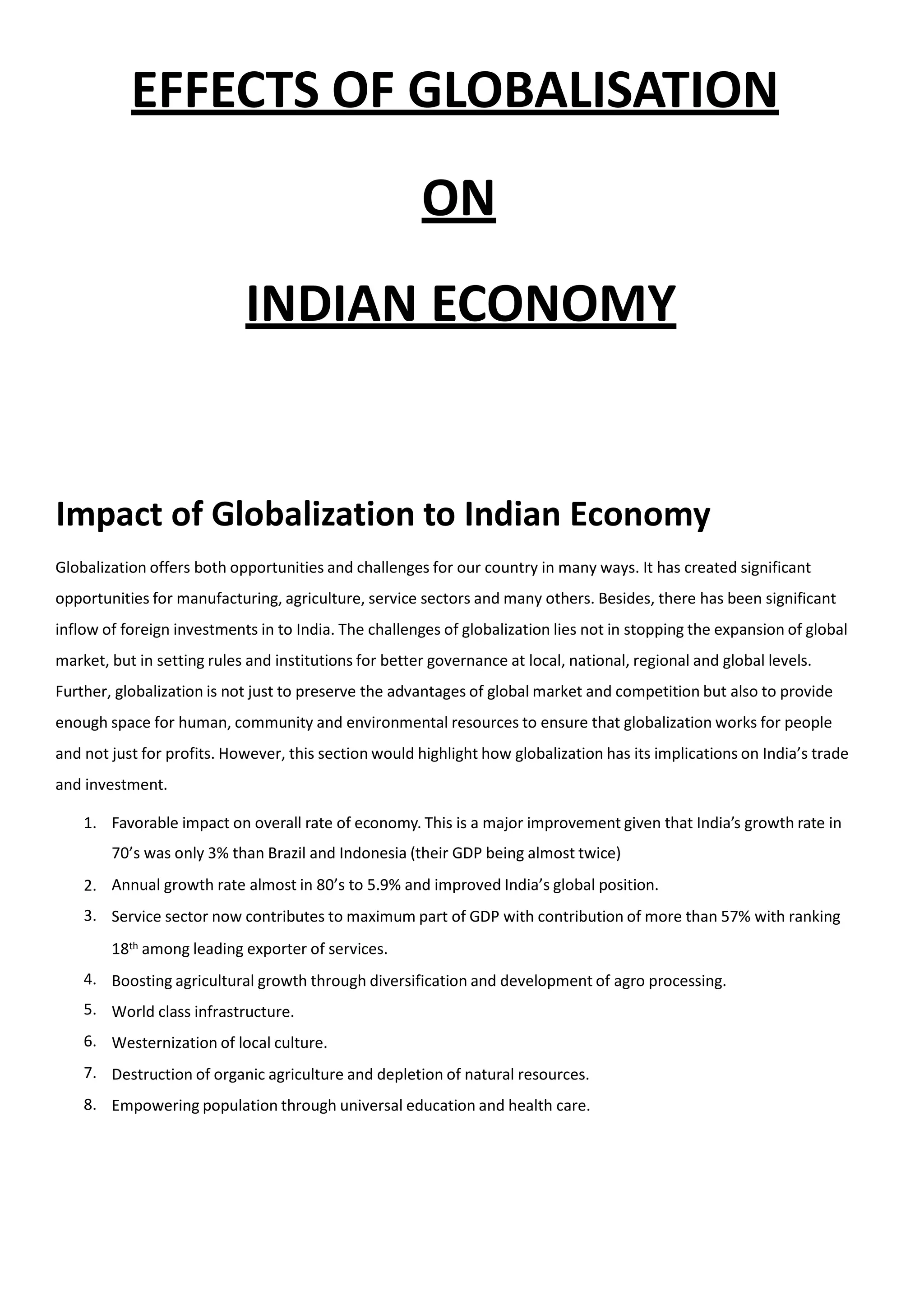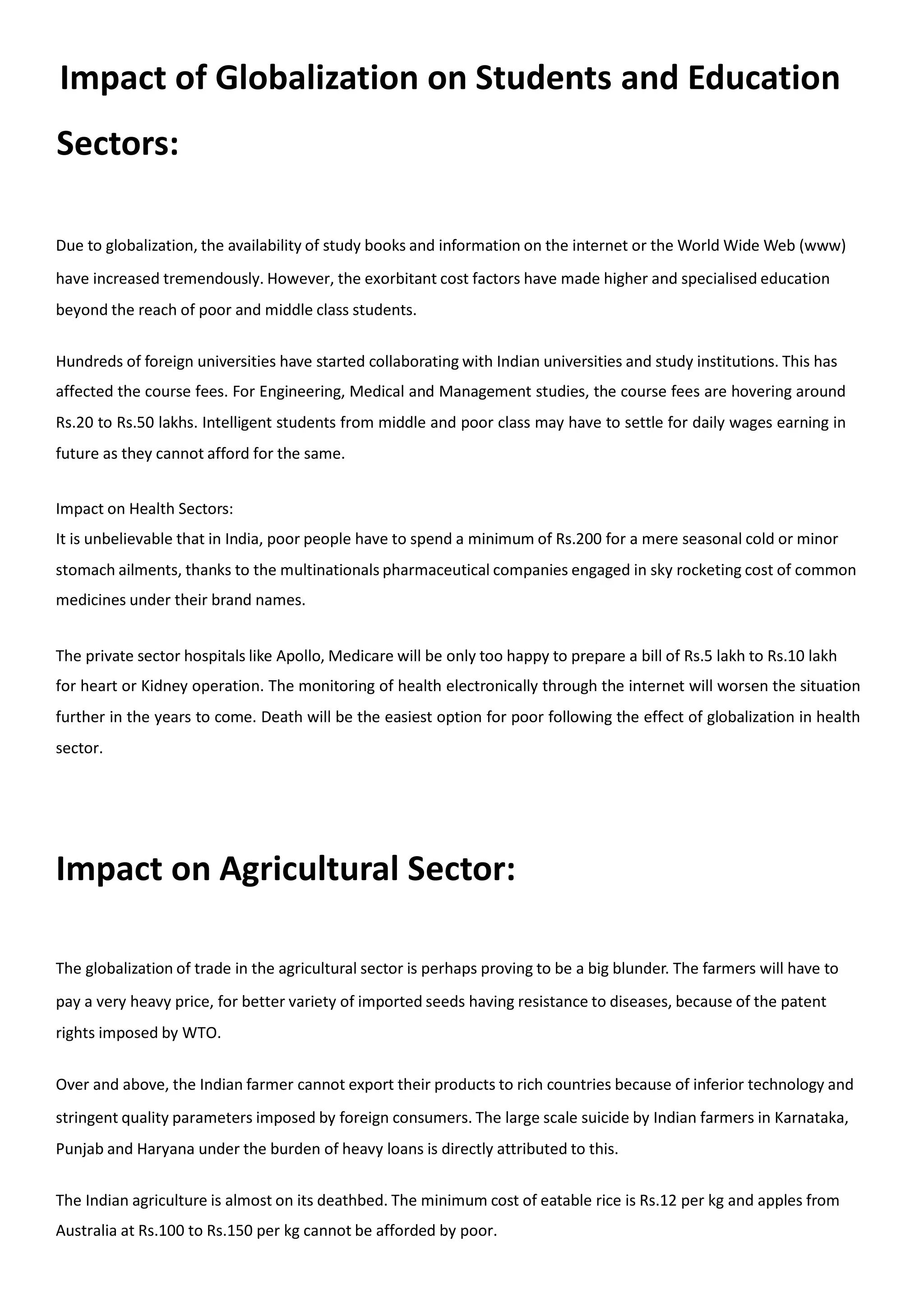The document discusses globalization as a multifaceted process of international integration influenced by advances in transportation and telecommunications, with significant implications for economic, cultural, and political frameworks. It highlights the role of multinational corporations in shaping local economies and the impact on social relations, culture, and public policy. Various scholars provide definitions and interpretations of globalization, emphasizing its complexity, including economic interdependence, cultural exchanges, and the dynamics of power among nation-states and corporate entities.
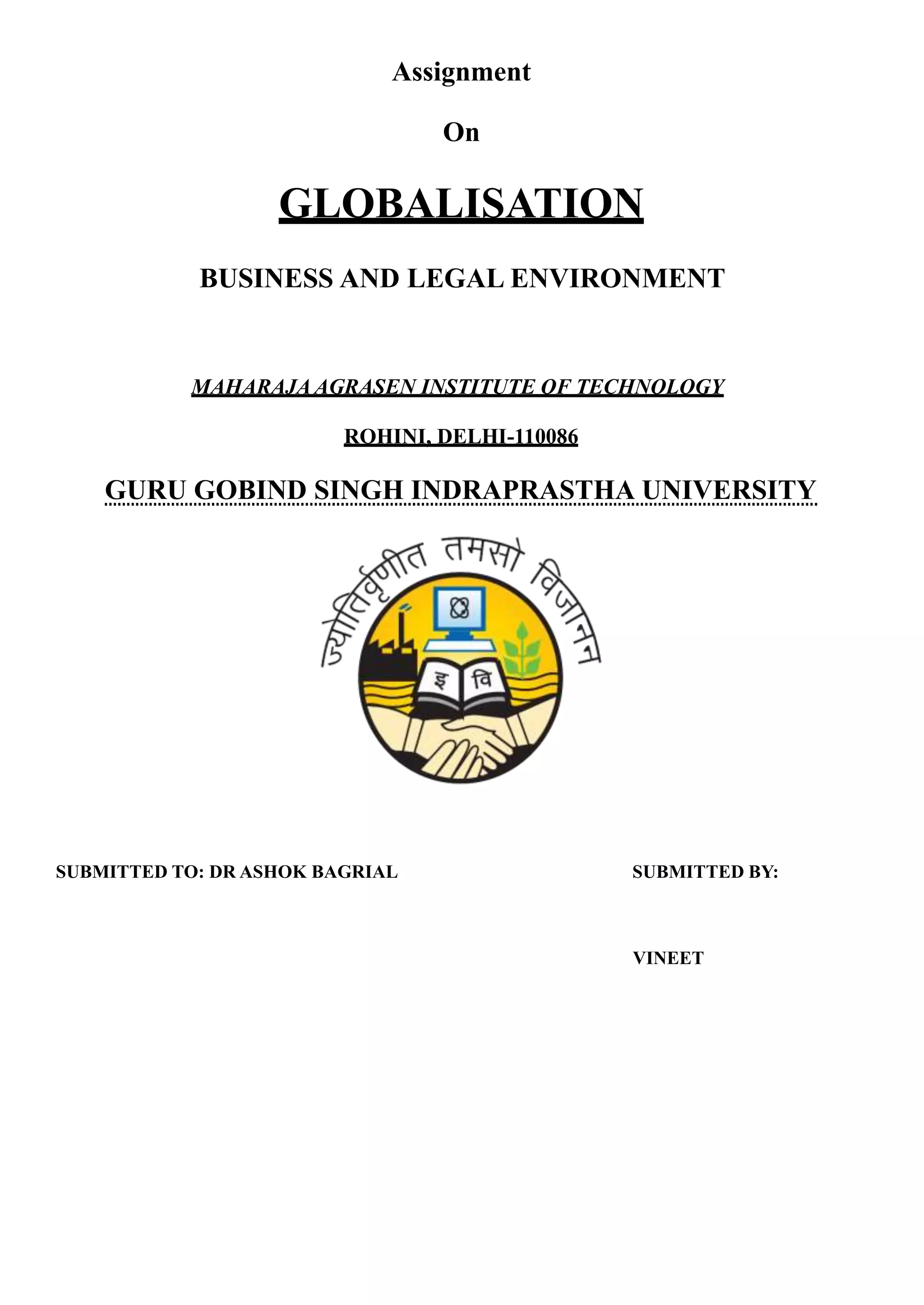
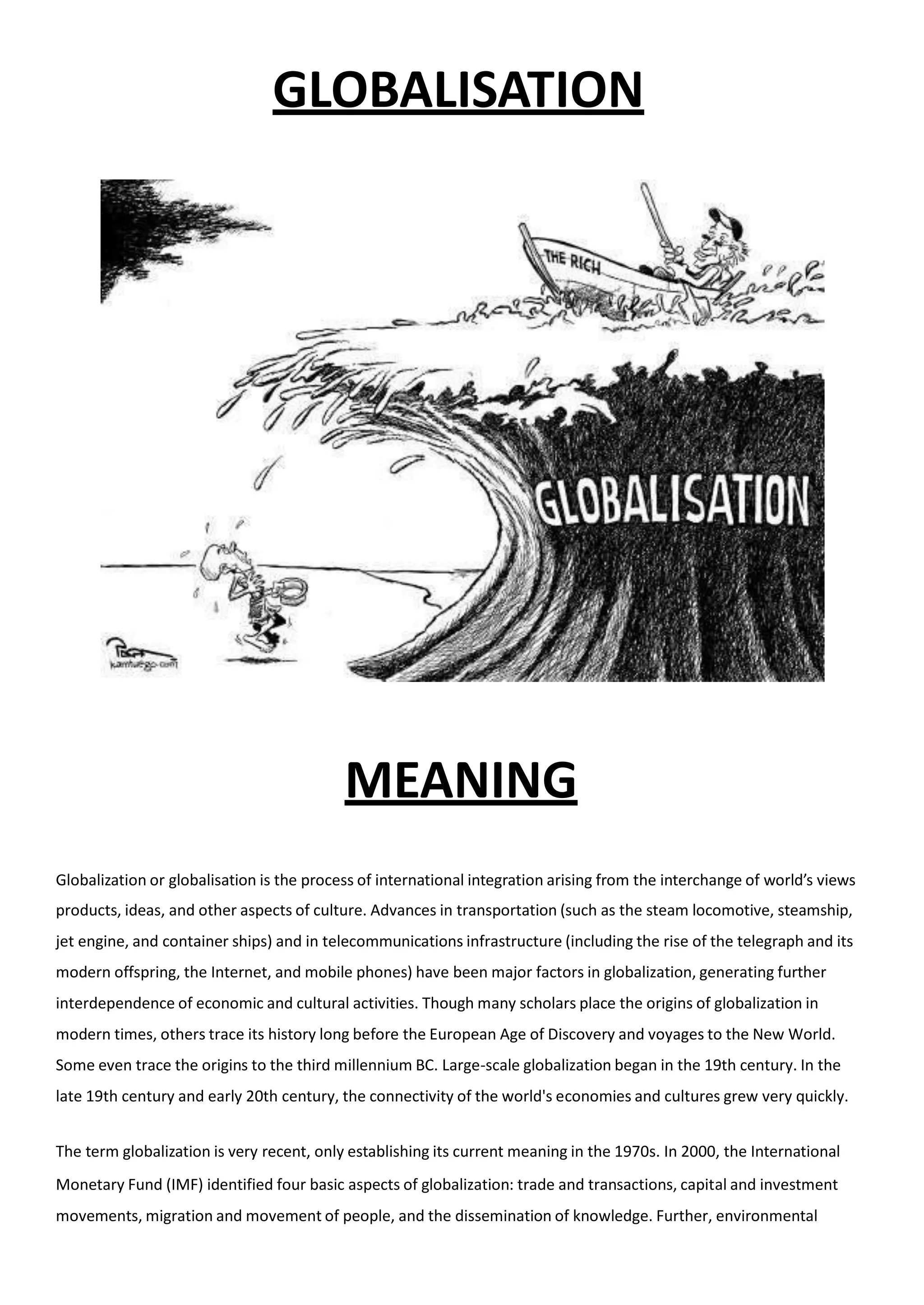
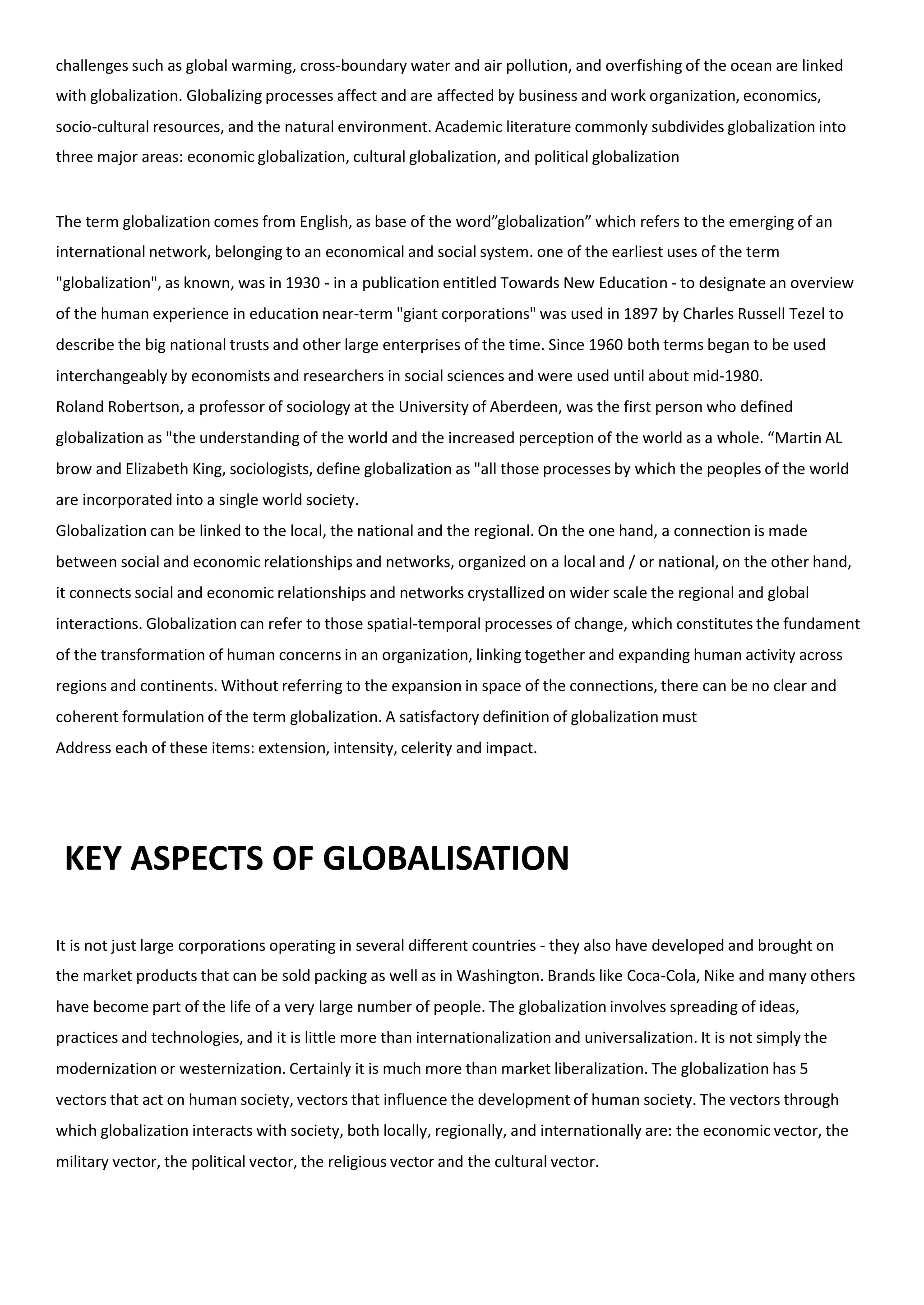

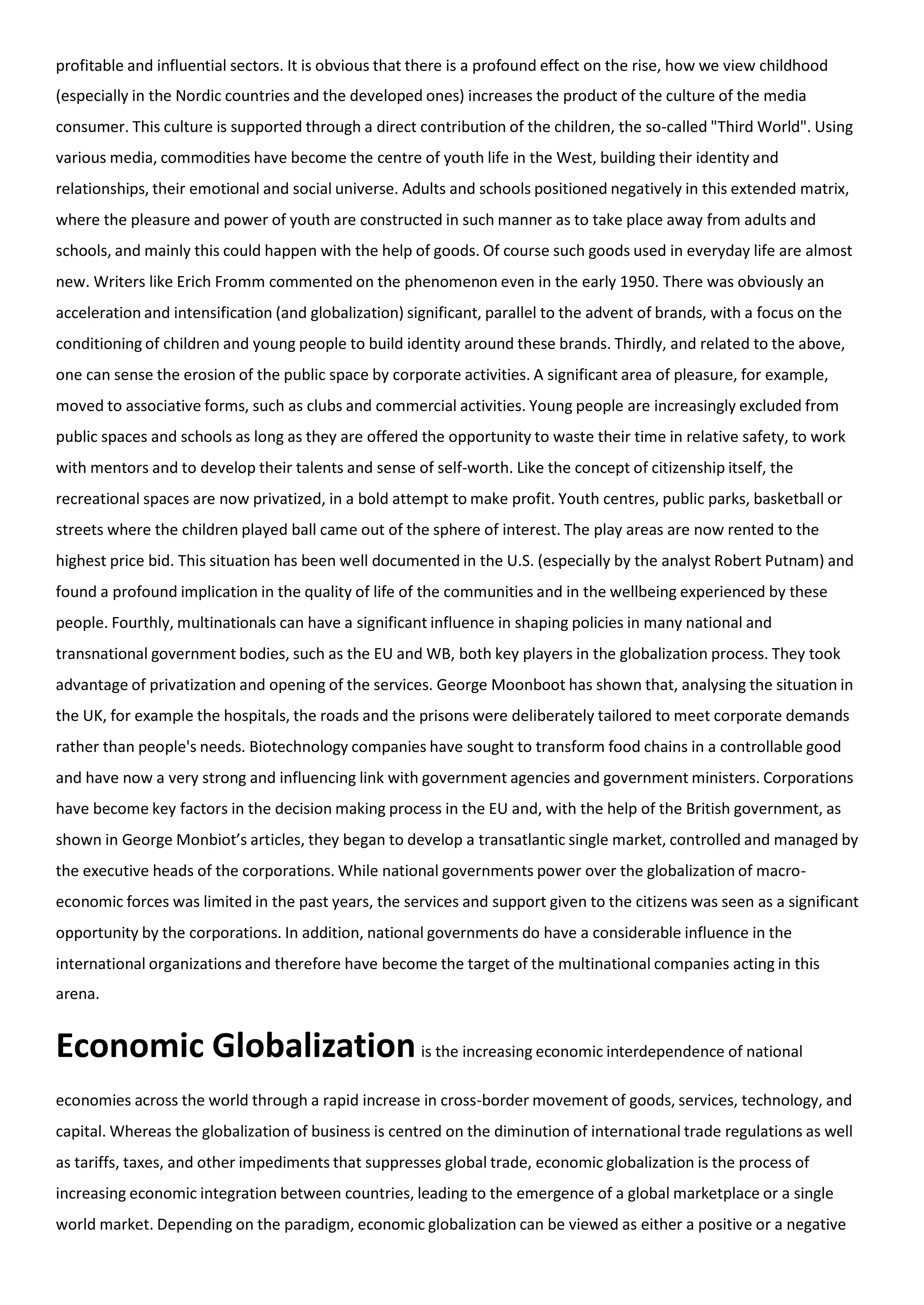
![phenomenon. Economic globalization comprises the globalization of production, markets, competition, technology,
and corporations and industries. Current globalization trends can be largely accounted for by developed economies
integrating with less developed economies by means of foreign direct investment, the reduction of trade barriers as
well as other economic reforms, and, in many cases, immigration.
In 1944, 44 nations attended the Bretton Woods Conference with a purpose of stabilizing world currencies and
establishing credit for international trade in the post-World War II era. While the international economic order
envisioned by the conference gave way to the neo-liberal economic order prevalent today, the conference
established many of the organizations essential to advancement towards a close-knit global economy and global
financial system, such as the World Bank, the International Monetary Fund, and the International Trade
Organization.
As an example, Chinese economic reform began to open China to globalization in the 1980's. Scholars find that China
has attained a degree of openness that is unprecedented among large and populous nations, with competition from
foreign goods in almost every sector of the economy. Foreign investment helped to greatly increase product quality
and knowledge and standards, especially in heavy industry. China's experience supports the assertion that
globalization greatly increases wealth for poor countries. During 2005–2007, and again from 2010 to 2013, the Port
of Shanghai held the title as the world's busiest port.
In India, business process outsourcing has been described as the "primary engine of the country's development over
the next few decades, contributing broadly to GDP growth, employment growth, and poverty alleviation".
William I. Robinson's theoretical approach to globalization is a critique of Wallenstein’s World Systems Theory. He
believes that the global capital experienced today is due to a new and distinct form of globalization which began in
the 1980s. Robinson argues not only are economic activities expanded across national boundaries but also there is a
transnational fragmentation of these activities.] One important aspect of Robinson's globalization theory is that
production of goods are increasingly global. This means that one pair of shoes can be produced by six different
countries, each contributing to a part of the production process.
Political Globalisation in general, globalization may ultimately reduce the importance of
nation states. Supranational institutions such as the European Union, the WTO, the G8 or the International Criminal
Court replace or extend national functions to facilitate international agreement. In particular, the globalization of the
US grand strategy may have already reduced the importance of both nation states and the above-mentioned
supranational institutions. Some observers attribute a relative decline in US power to globalization, particularly due
to the country's high trade deficit. This led to a global power shift towards Asian states, particularly China, which
unleashed market forces and achieved tremendous growth rates. As of 2011, the Chinese economy was on track to
overtake the United States by 2025.
Increasingly, non-governmental organizations influence public policy across national boundaries, including
humanitarian aid and developmental efforts. Philanthropic organizations with global missions are also coming to the
forefront of humanitarian efforts; charities such as the Bill and Melinda Gates Foundation, Accion International, the
Acumen Fund (now Acumen) and the Echoing Green have combined the business model with philanthropy, giving](https://image.slidesharecdn.com/globalisationassignmentppt-170316051014/75/Globalisation-ppt-6-2048.jpg)
![rise to business organizations such as the Global Philanthropy Group and new associations of philanthropists such as
the Global Philanthropy Forum. The Bill and Melinda Gates Foundation projects include a current multibillion-dollar
commitment to funding immunizations in some of the world's more impoverished but rapidly growing countries.
And hundreds of millions of dollars in the next few years to programs aimed at encouraging saving by the world's
poor. The Hudson Institute estimates total private philanthropic flows to developing countries at US$59 billion in
2010.
As a response to globalization, some countries have embraced isolationist policies. For example, the North Korean
government makes it very difficult for foreigners to enter the country and strictly monitors their activities when they
do. Aid workers are subject to considerable scrutiny and excluded from places and regions the government does not
wish them to enter. Citizens cannot freely leave the country.
Cultural Globalisation refers to the transmission of ideas, meanings, and values around
the world in such a way as to extend and intensify social relations.] This process is marked by the common
consumption of cultures that have been diffused by the Internet, popular culture media, and international travel.
This has added to processes of commodity exchange and colonization which have a longer history of carrying cultural
meaning around the globe. The circulation of cultures enables individuals to partake in extended social relations that
cross national and regional borders. The creation and expansion of such social relations is not merely observed on a
material level. Cultural globalization involves the formation of shared norms and knowledge with which people
associate their individual and collective cultural identities. It brings increasing interconnectedness among different
populations and cultures.
Cultural globalization has increased cross-cultural contacts, but may be accompanied by a decrease in the
uniqueness of once-isolated communities. For example, sushi is available in Germany as well as Japan, but Euro-
Disney outdraws the city of Paris, potentially reducing demand for "authentic" French pastry. Globalization's
contribution to the alienation of individuals from their traditions may be modest compared to the impact of
modernity itself, as alleged by existentialists such as Jean-Paul Sartre and Albert Camus. Globalization has expanded
recreational opportunities by spreading pop culture, particularly via the Internet and satellite television.
Religious movements were among the earliest cultural elements to globalize, being spread by force, migration,
evangelists, imperialists, and traders. Christianity, Islam, Buddhism, and more recently sects such as Mormonism are
among those religions which have taken root and influenced endemic cultures in places far from their origins.
The growth of multinationals and the globalization of their impact have determined the advent of brands. The
astronomical growth of wealth and cultural influence of multinational companies over the past 15 years can be
attributed to an idea developed by the management theorists of the 80s: successful corporations must first produce
brands, as opposed to products. As Naomi Klein suggested, brand makers are primarily producers of the so-called
knowledge/ skills economy. One of the key elements that make companies multinational rather than transnational,
is the expansion into what they regard as external sources of materials, components and services. The logical
connection is that all corporations should not spend their finite resources in plants that cannot keep on equipment’s](https://image.slidesharecdn.com/globalisationassignmentppt-170316051014/75/Globalisation-ppt-7-2048.jpg)
